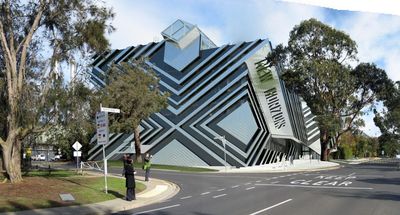Monash University and CSIRO’s sustainable research facility
Tuesday, 25 June, 2013
The New Horizons project is a joint initiative by Monash University and the Australian Government research organisation CSIRO. The new building is dedicated to research activities on material engineering including computational and physical modelling of manufactured products and services in the biomedical, aerospace and renewable energy fields. Located in the suburbs of Melbourne, the development establishes the Monash University Clayton Innovation Precinct as a significant technology innovation hub in the Southern Hemisphere.
The building is a reinforced concrete structure of approximately 20,000 m2, split over four levels. The external facade of the building is a complex three-dimensional design requiring detailed computer modelling prior to precise fabrication. Inside the facility are modern office spaces; extensive specialist laboratory spaces; and numerous meeting and conference areas.
System integration company Ecoview Integration Services was contracted to carry out lighting control, automation and energy monitoring work. The company undertook the project in conjunction with Stowe Australia. Ecoview’s lighting control system solution is based on KNX, the worldwide standard for home and building automation. The company’s open architecture design is capable of expansion upgrades to suit any future requirements of the installation. Motion sensors in the laboratories, toilets and other areas control lighting when movement is detected, optimising efficiency and safety. Daylight harvesting was provided in specified areas via KNX/DALI gateways, compatible with dimmable luminaire control gear.

An essential requirement from the customer was an uninterrupted power supply for the entire building. Ecoview’s KNX control system and energy monitoring system records the overall power consumed (kWh) and power consumed in nominated sections. The KNX control system also monitors the normal power supply at the main switchboard and each automatic transfer switch location, as well as monitoring the signal to start the generator standby supply in the event of power failure. The system sheds all load and automatically transfers the essential load from the normal supply to the standby supply in predetermined load steps as per ‘priority listing’. When the mains supply has been re-energised, the system will transfer the load back to the mains supply in an orderly fashion. The KNX control system will provide a back-up transfer system in the event that the mains supply has failed or the head end control system (within the building manager’s office) has failed and standby power is available at the transfer switches. Under these conditions, the local transfer switch logic shall take control and transfer to the standby supply in a sequential order.
The control of the system and data shall be recorded in a dedicated IPC with a SCADA program which shall send selected information and alarms to the BMS system. The design has been based upon the KNX open-architecture model and the systems integration has been completed by Ecoview’s in-house engineers. The completed system provides the client with an easily adaptable standardised system which has the ability for future changes already built in. The project was built by Probuild and Lyons was the project architect.
How smart HVAC is creating sustainable buildings
By integrating advanced technology and data-driven strategies, building operators can greatly...
Smelly research could influence HVAC industry
In a dedicated lab space that mimics a tiny house, scientists are investigating the impact of...
Lifestyle community gains a new level of connectivity
GemLife, a developer of over-50s lifestyle communities, was facing challenges with its fixed...




